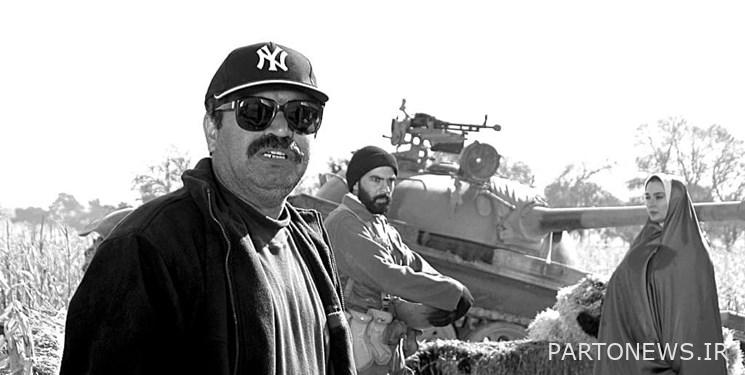Unseen photos of Rasoul Malakalipour behind the scenes

According to a Fars News Agency cinema reporter, Rasoul Mollaqlipour’s life was present at the front during the years of holy defense and he was filming. Until the fall of Khorramshahr and turning it into a bloody city on October 15, 1980, he photographed events and popular resistance.

October 1980, the roof of a house in Khorramshahr, the resistance of volunteer and army forces against the Ba’athist enemy / Photographer: Rasoul Malakalipour
He had the most people on the front with 2 people; Behrouz Moradi and Hassan Shaukatpour, both of whom were later martyred. Moradi was a photographer and painter. Rasool Malakalipour in his memoirs of this great martyr before the fall of Khorramshahr said: Khorramshahr was falling, only the Grand Mosque remained. The warriors did not have bullets, nor did we have film for photography; I saw Behrouz painting on the wall of the Grand Mosque, which was full of fragments. I said Behrooz, what are you doing? They are building a mosque with a tank! Behrooz said: Rasool, this time you came, bring more movies with you! Because this war is over and we are victorious and the same photos, films and paintings remain.

This very presence of Malakalipour in the fronts of right against wrong had caused him to present a humane and believable image of the holy defense after entering filmmaking, the culmination of which can be seen in works such as “Belmi to the coast” and “Journey to Chezabeh”. . Another film that is sometimes broadcast on television on the occasion of the anniversary of the liberation of Khorramshahr is “Father’s Farm”. The film faced a lack of space in the screening, so that in 1383, with 63,151 tickets, it was ranked 31st in the sales chart of Iranian cinema.

“Father’s Farm” sold tickets for 2008 and 643, respectively, in 1984 and 1985. One of the reasons for the lack of interest in this 98-minute film was the difference between the producer and the director. Malakalipour had told the film monthly about this: part of the “father farm” was invested by the arts and the other part was invested by Farabi and television, but somehow it was left without an owner. Mr. Bowl Maker [تهیهکننده فیلم] I accept him as a good person and friend, but the result was not important to him at all. Finally, they decided to screen it during the war week by reducing a few scenes. I asked them not to screen the film.

He continues: I went to Mr. Rezadad [مدیرعامل وقت بنیاد سینمایی فارابی]. I begged you very much. I had never asked so much in my life. Because there are so many different occasions during the week of the war and there are so many discussions about sacred defense, no one is so eager to go pay and watch a war movie. They had taken their father’s farm to the assembly table and one person was reducing the scenes by a meter! Since it was the sound of a Dolby movie, I asked them to give me two days to make those two pieces myself. [از جمله لالایی خواندن شخصیت زن] Call the correction and deliver them with the corrections. I was finally able to mix parts. At the time of its release, the film teaser was broadcast only seven times on television.

The synopsis of the screenplay, written by Malakalipour, states: Mahmoud Shoktian has been invited to Ahvaz to speak at a literary conference on war literature for a review meeting of his latest book, “Father’s Farm.” He lost his wife and two children during the war due to enemy bombardment, but he imagines them alive and accompanies them on this journey in his mind. During the trip, Mahmoud Shoktian recalls past memories and events of the war; This is how they carried out a deadly operation to extinguish the enemy’s long-range artillery with a battalion, and in this incident, they lost some of their friends and comrades, but they finally succeeded in their mission. While recalling these memories, he always struggles with the memories of his wife and children.

After these atrocities, Malakalipour, according to his own words, became heartbroken and in 2004 he said goodbye to cinema. Of course, he returned to the cinema a few years later and made the film “Meem Like a Mother”.

He had said about “Father’s Farm”: “My intention in this film was to show Sirusluk, a man in a fantasy world, with his martyred wife and children.”
Photos: Mohsen Kashesaz, Amir Abedi, Pouria Azarbayjani
End of message /
You can edit this post
Suggest this for the front page

